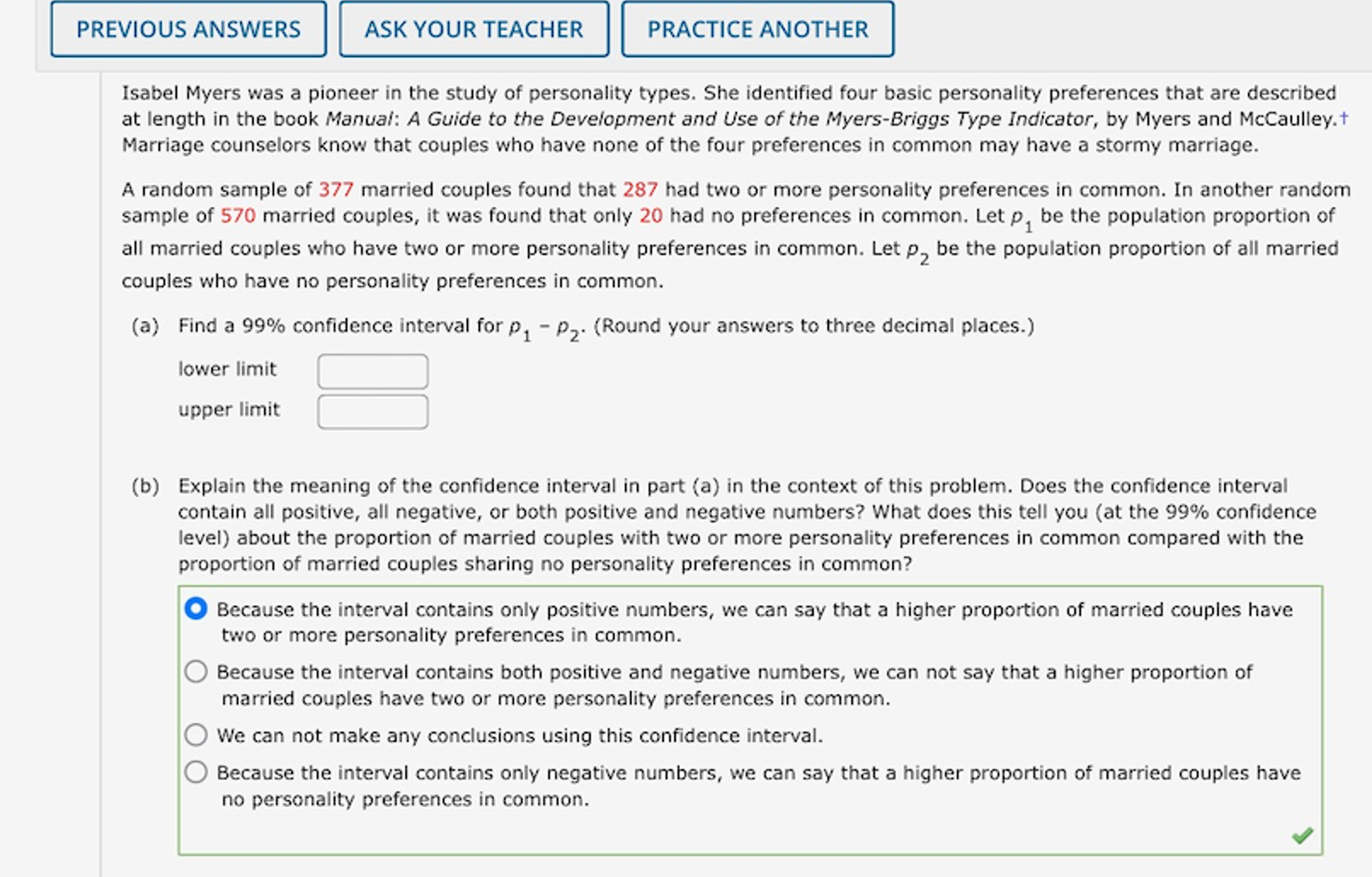(Solved): Isabel Myers was a pioneer in the study of personality types. She identified four basic personality ...
Isabel Myers was a pioneer in the study of personality types. She identified four basic personality preferences that are described at length in the book Manual: A Guide to the Development and Use of the Myers-Briggs Type Indicator, by Myers and McCaulley.† Marriage counselors know that couples who have none of the four preferences in common may have a stormy marriage. A random sample of 377 married couples found that 287 had two or more personality preferences in common. In another random sample of 570 married couples, it was found that only 20 had no preferences in common. Let p1 be the population proportion of all married couples who have two or more personality preferences in common. Let p2 be the population proportion of all married couples who have no personality preferences in common. (a) Find a 99% confidence interval for p1 – p2. (Round your answers to three decimal places.) lower limit upper limitIsabel Myers was a pioneer in the study of personality types. She identified four basic personality preferences that are described at length in the book Manual: A Guide to the Development and Use of the Myers-Briggs Type Indicator, by Myers and McCaulley.t Marriage counselors know that couples who have none of the four preferences in common may have a stormy marriage. A random sample of 377 married couples found that 287 had two or more personality preferences in common. In another random sample of 570 married couples, it was found that only 20 had no preferences in common. Let
p_(1)be the population proportion of all married couples who have two or more personality preferences in common. Let
\rho _(2)be the population proportion of all married couples who have no personality preferences in common. (a) Find a
99%confidence interval for
p_(1)-p_(2). (Round your answers to three decimal places.) lower limit upper limit (b) Explain the meaning of the confidence interval in part (a) in the context of this problem. Does the confidence interval contain all positive, all negative, or both positive and negative numbers? What does this tell you (at the
99%confidence level) about the proportion of married couples with two or more personality preferences in common compared with the proportion of married couples sharing no personality preferences in common? Because the interval contains only positive numbers, we can say that a higher proportion of married couples have two or more personality preferences in common. Because the interval contains both positive and negative numbers, we can not say that a higher proportion of married couples have two or more personality preferences in common. We can not make any conclusions using this confidence interval. Because the interval contains only negative numbers, we can say that a higher proportion of married couples have no personality preferences in common.
